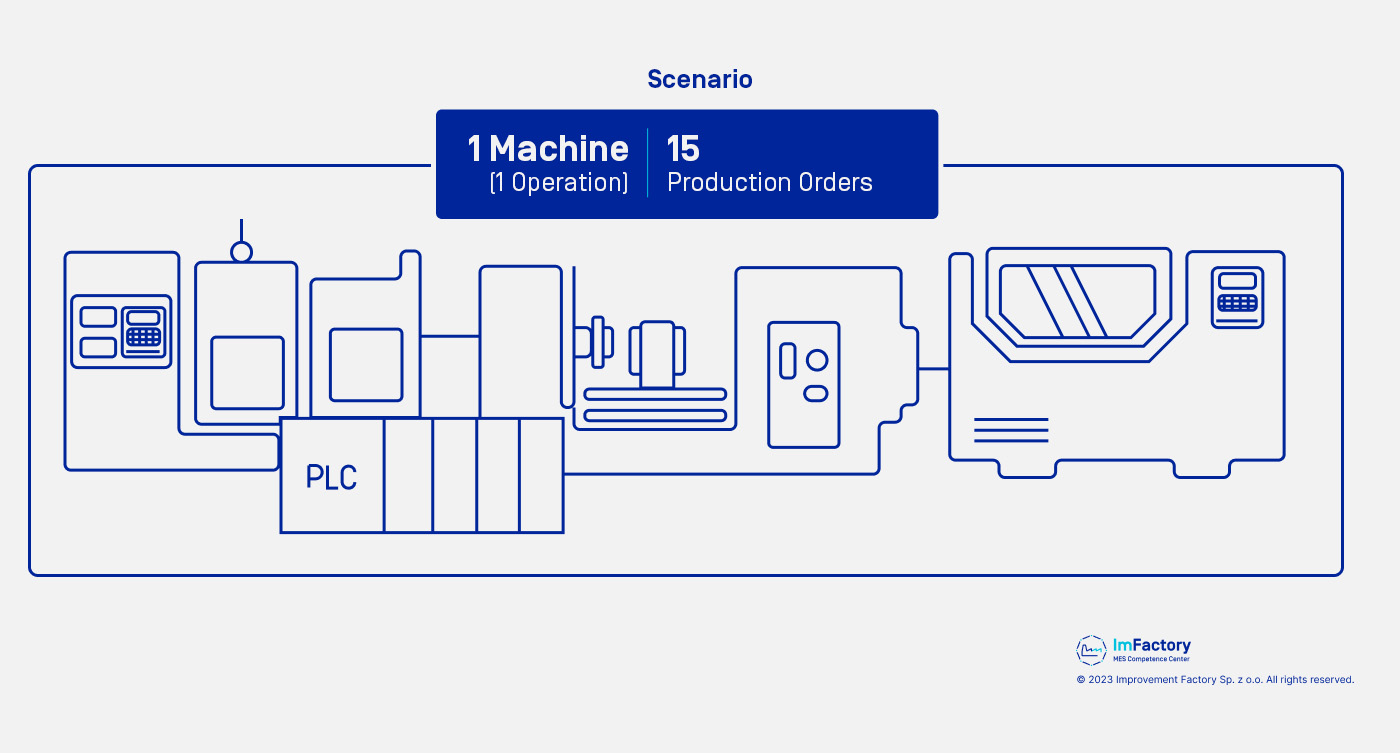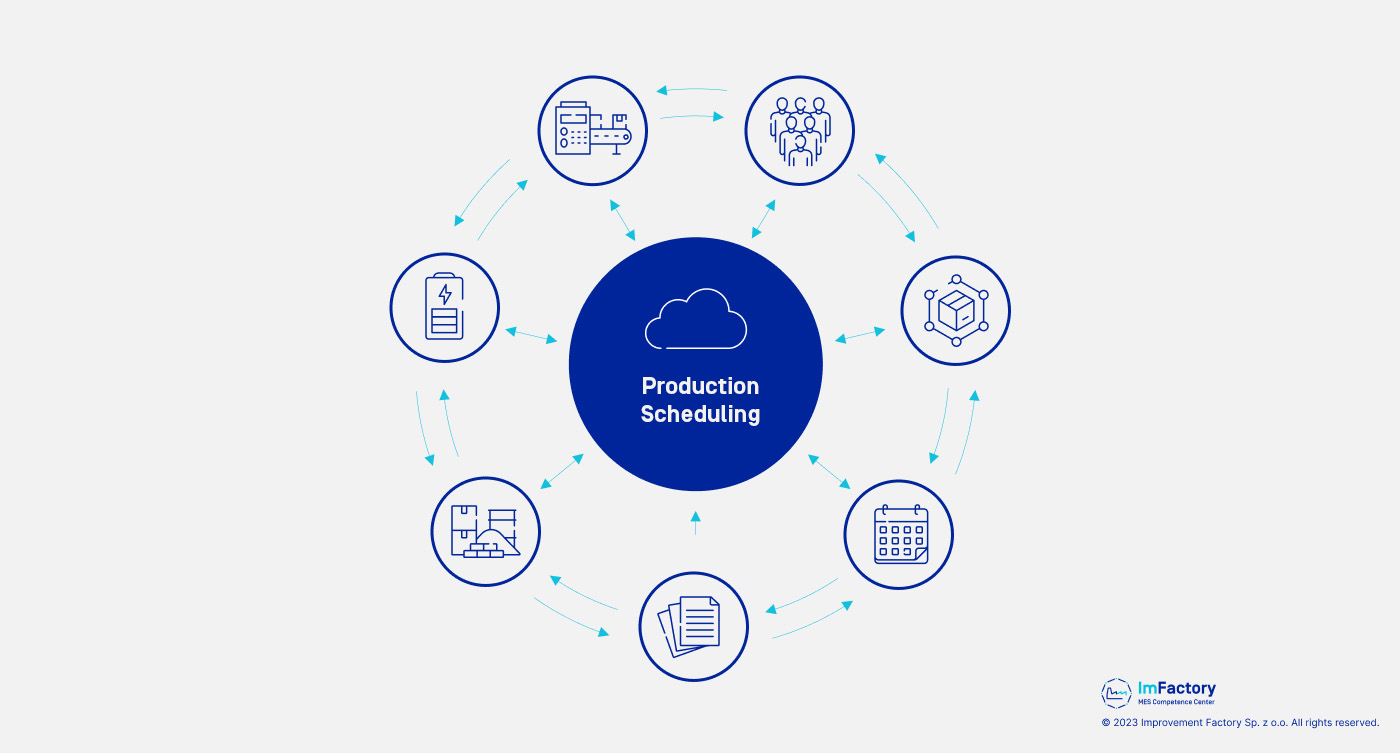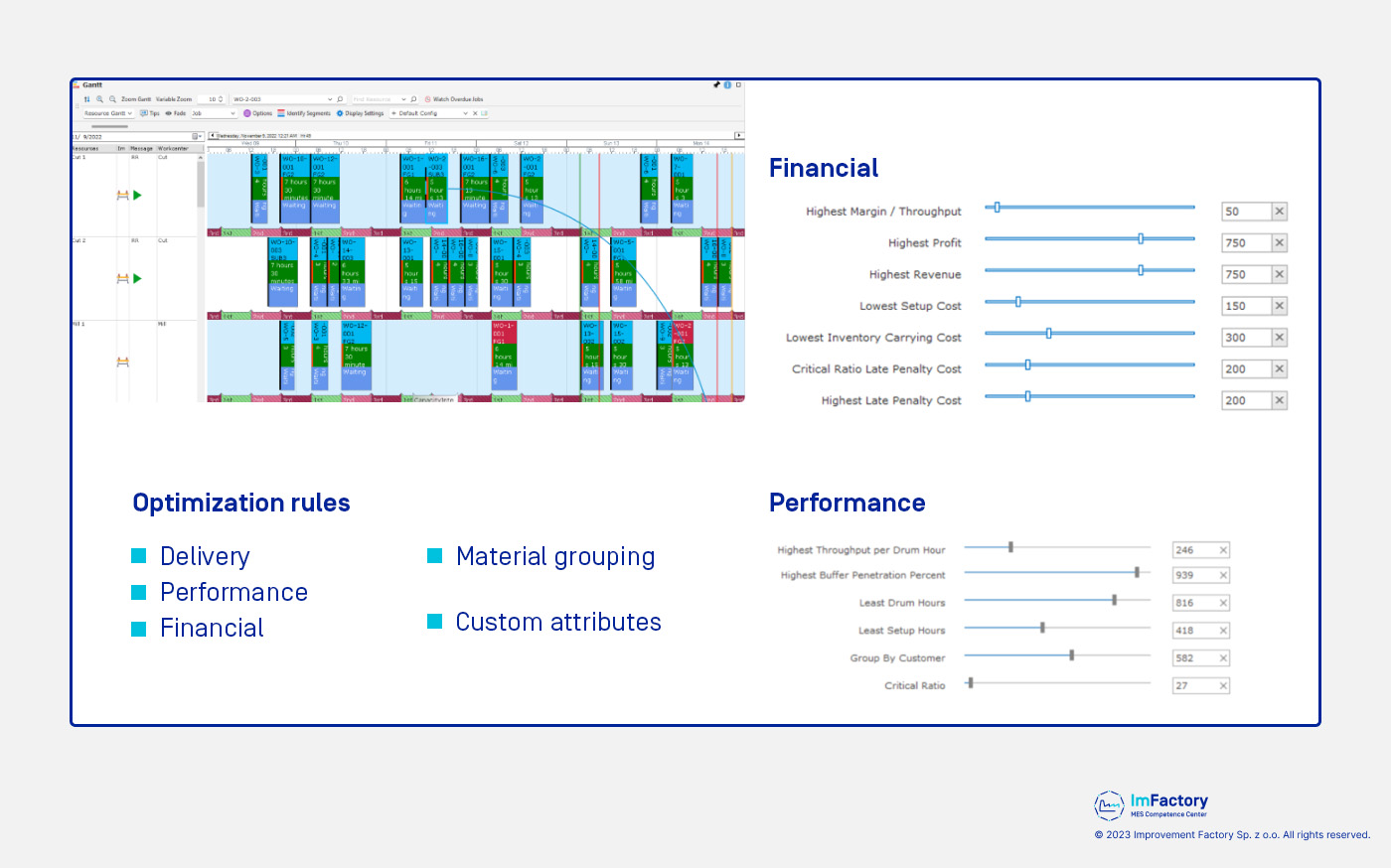
The Complexities of Production Scheduling

Every company, regardless of industry or size, creates schedules to organize daily work. However, we often overlook just how much depends on the proper preparation of these plans. Typically, in the rush of responsibilities and orders to fulfill, there’s little time to consider what might happen if we arranged our schedule differently. Additionally, the volume of information that planners must factor in is often so overwhelming that analyzing every detail becomes impossible. That’s unfortunate, because those details may be hiding potential opportunities, but also pitfalls. As scheduling can influence key profitability metrics, let’s explore the challenges and opportunities that this process presents.
Imagine that your company has one machine and fifteen production orders to complete. How many options are there to arrange these orders?

The answer is surprising – there are over a trillion possible combinations.

While this number may not immediately come to mind, it’s important to remember that an average manufacturing company typically handles much more than fifteen orders.
Let’s see how many scheduling variants there are for fifty orders. This results in an astonishing number – approximately 3,04 * 1064, more than the number of seconds since the universe began or the number of atoms on Earth!

Do we typically think about scheduling in these terms? As a process filled with so many possibilities, and just as many potential pitfalls?
While the example above might seem impressive, real-world scheduling is even more complex. Usually, we need to consider larger amounts of not just orders but also production resources and operations.
The data involved in scheduling can be divided into two categories:
- Master Data determines the boundary conditions for the functioning of production processes. This includes data about production resources and their nominal capacities, product definitions – bills of materials (BOM), routing definitions – bills of resources (BOR), information on the required personnel or specialists, and production calendars.
While master data can be vast, it has the advantage of being relatively stable over time.
- Transactional Data describes the company’s current demands, capabilities, and limitations. This includes new customer orders, unfulfilled orders, inventory levels, the order completion status for raw materials, semi-finished products, etc. Transactional data also encompasses the current availability of production resources and employees, as well as required changeovers and maintenance activities.
Transactional data can also include large amounts of information sourced from multiple channels and subject to frequent changes. This dynamic nature is a significant challenge in the scheduling process.

Learn how to gather reliable production data here.
So, how do companies deal with such a complex issue, one that has a profound impact on their functioning? While many companies use ERP systems for planning, the tool that planners most often must rely on to convert these plans into final schedules is still the spreadsheet.
Working with spreadsheets usually requires manually gathering data from numerous communication channels, especially transactional data. Therefore, planners must communicate through files, emails, phone calls, and, at times, printed documents. Numerous manual operations must be performed in the spreadsheet itself, including sorting, grouping, merging, and copying data across sheets and files.
To ensure that scheduling takes a reasonable amount of time, significant simplifications are necessary, both in terms of the data considered and the number of possible sequences or order arrangements reviewed. In practice, these possibilities are often not verified at all, simply because of time constraints.
What is usually the outcome of this approach? Despite these simplifications, creating a schedule still takes hours or even days. Changes are also problematic – it often turns out that by the time the schedule is published, it no longer reflects the company’s actual situation. Moreover, it is extremely problematic to optimize a schedule created in spreadsheets for a specific business goal.

Simply put, using spreadsheets often means that we are planning the efficiency of machinery and inventory worth millions with a tool that is far from efficient.
Read our article and discover how to break free from spreadsheets in your company.
Specialized Advanced Planning and Scheduling (APS) tools available on the market can quickly and easily generate production plans and schedules. What can such systems bring to your scheduling process?
Firstly, APS software simplifies communication by allowing the import and export of all the data required for scheduling. It also offers numerous algorithms and optimization criteria, including those related to on-time delivery, performance, finances, material grouping, or attributes specific to your company.
In addition to these options, available to planners in the interface through fields for data entry, checkboxes, or sliders, a key benefit of APS is its speed. The software can generate complex schedules involving tens of thousands of production operations within a few seconds or minutes.

The flexibility, configurability, and operational speed of APS allow companies to quickly adapt to changing conditions, such as shifting priorities, resource failures, or material shortages. The system also facilitates the optimization of schedules to align with desired KPI values.
By nature, scheduling must account for vast amounts of data, because the more accurately it reflects reality, the better the resulting schedule will align with the company’s production capabilities, enabling it to more effectively achieve its objectives. While planning with spreadsheets is very limiting in this regard, a much better solution is to reach for a specialized tool designed exactly for production scheduling.
Are you wondering if APS software is right for your company? Contact us! Our consultants are there to help you evaluate whether APS is a good fit for your business. You can also assess this by developing a Digital Transformation Roadmap, where APS may be included as one of its key components.

Artur Masłowski graduated in Automation and Robotics from Szczecin University of Technology. For nearly 20 years as a member of the ASTOR Group, he had actively focused on improving efficiency, quality, and process optimization in manufacturing and infrastructure companies, employing solutions in automation, industrial IT, and robotics.
Since 2018, he has contributed his skills to the Improvement Factory team, where his responsibilities include the comprehensive business development of organizations, consulting on industrial IT solutions, formalizing and negotiating project agreements with clients, and overseeing the successful implementation of projects.
See also
Want to learn more? Visit our Knowledge Base, where you'll find articles and webinars by experts to expand your knowledge.
Check if Digital Transformation is the Answer to Your Company's Needs


































